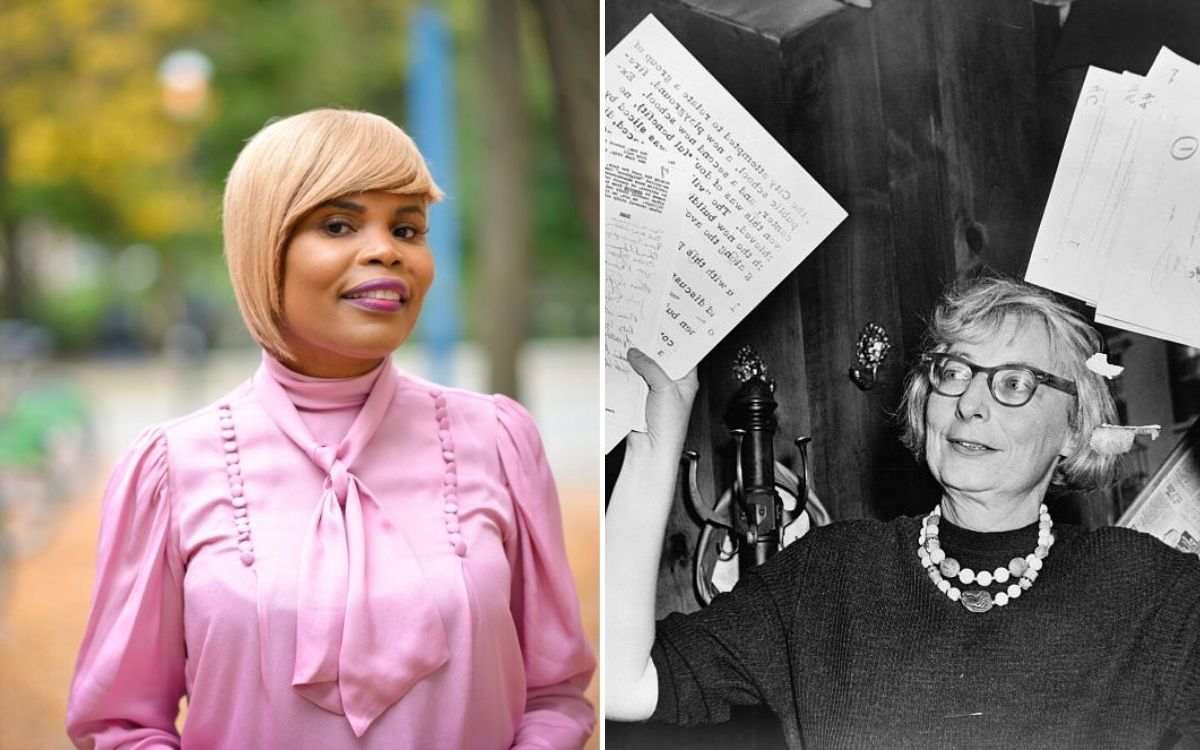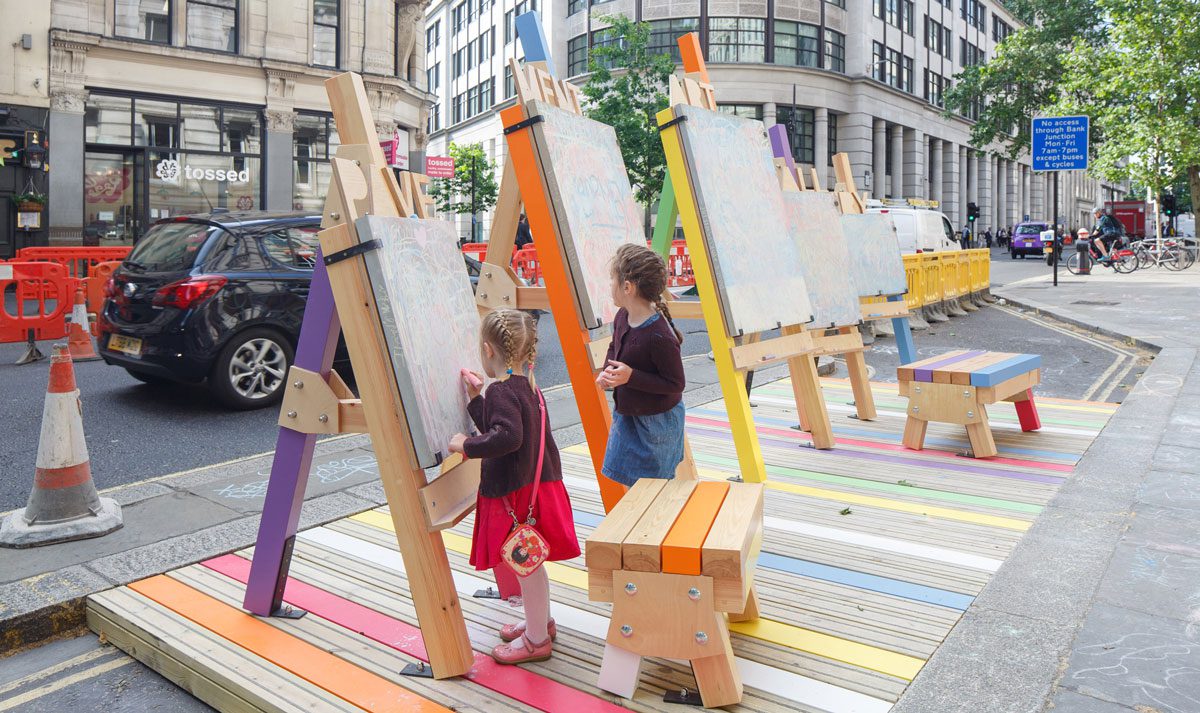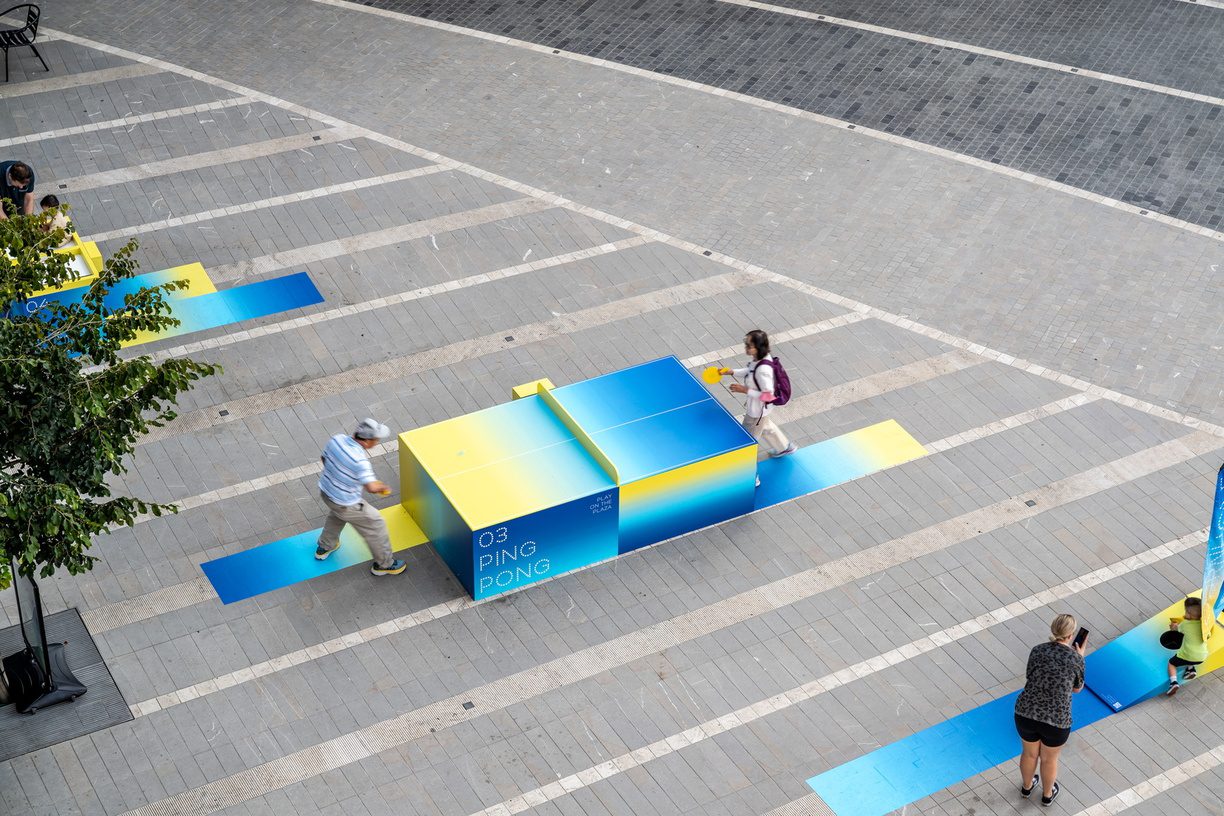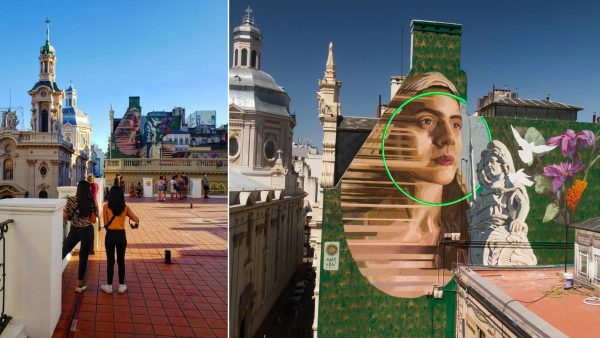Cette journée est une célébration mondiale des réalisations sociales, économiques, culturelles et politiques des femmes. C’est aussi une journée pour sensibiliser aux défis auxquels les femmes sont confrontées et réfléchir à la manière dont nous pouvons créer un monde plus inclusif et sûr pour tous.
Les espaces publics – tels que les parcs, les rues et les places – servent de toile de fond à la vie en communauté, mais les expériences des individus dans ces endroits, en particulier des femmes, peuvent varier considérablement. Réfléchissons à la manière dont le placemaking, une approche communautaire de la planification, de la conception et de la gestion des espaces publics, peut être réimaginé pour améliorer la sécurité et le sentiment d’appartenance pour tous.
Il est temps de reconnaître l’impact des villes et des quartiers sur les expériences et les capacités d’action des femmes, et de travailler ensemble pour que nos espaces publics incarnent les valeurs d’égalité et d’inclusivité.

Aucune exploration du placemaking n’est complète sans la reconnaissance de l’héritage de Jane Jacobs’ et de l’impact des contributions de cheffes de file comme Jay Pitter.
Jane Jacobs, visionnaire et activiste urbaine, a remis en question les idées conventionnelles sur le développement des villes. Son livre révolutionnaire, « The Death and Life of Great American Cities, » (La mort et la vie des grandes villes américaines), reste une pierre angulaire de la littérature sur l’urbanisme. Mme Jacobs a plaidé en faveur d’une planification urbaine axée sur la communauté, soulignant l’importance pour les villes de favoriser la croissance organique des quartiers et des communautés.
Son héritage témoigne de l’influence transformatrice des femmes dans le façonnement des environnements urbains, en prônant la diversité, la densité et des espaces urbains dynamiques qui répondent aux divers besoins et expériences de tous les individus, quel que soit leur sexe.
Dans le paysage contemporain du placemaking, des voix comme celle de Jay Pitter repoussent les limites au croisement de la conception urbaine et de la justice sociale. Avec un portfolio couvrant plus de 25 villes en Amérique du Nord, Jay Pitter redéfinit la façon dont nous percevons et créons les espaces publics.
Pitter représente une nouvelle vague de leadership éclairé en matière de placemaking. Son travail contribue activement à l’évolution des espaces publics qui donnent la priorité à l’inclusion et à la sécurité pour tous.
Dans l’exploration des dynamiques de transformation urbaine, il est essentiel de reconnaître que la quête de changement va au-delà des figures emblématiques de Jay Pitter et Jane Jacobs. Nous célébrons la multitude d’individus et d’initiatives dont les contributions, parfois méconnues, sont tout aussi vitales pour façonner nos villes pour le mieux. »

Le placemaking joue un rôle crucial dans la perception que les individus ont des espaces publics mais aussi dans leur confort. En concevant et en créant des espaces invitants, inclusifs et esthétiquement agréables, les initiatives de placemaking visent à favoriser un sentiment d’appartenance chez les personnes qui les utilisent.
Cependant, il est important de reconnaître que le sentiment d’appartenance dans les espaces publics peut varier considérablement d’un individu à l’autre, en particulier pour les femmes. Des facteurs tels que les préoccupations en matière de sécurité, les normes sociales et les attentes liées au genre peuvent influencer la manière dont les femmes perçoivent et utilisent ces espaces. En relevant ces défis et en impliquant activement des voix diverses dans le processus de création de lieux, nous pouvons créer des espaces publics qui favorisent un véritable sentiment d’appartenance pour tous, en veillant à ce qu’ils soient sûrs, accueillants et qu’ils reflètent les divers besoins et expériences de chacun.
L’intégration de couleurs vives et de visuels attrayants dans les espaces publics a un impact profond sur la manière dont les individus vivent et interagissent avec leur environnement. Des études ont montré que les espaces agréables sur le plan esthétique attirent les gens, les incitent à passer plus de temps et à s’engager dans des activités. La création d’un espace accueillant qui offre un moment de répit dans un environnement urbain parfois difficile peut être l’occasion de se détendre et de renforcer la cohésion de la communauté.
Le sentiment de sécurité est un élément essentiel dans les discussions sur l’expérience des femmes dans les espaces publics. Le placemaking permet de répondre à ces préoccupations en concevant intentionnellement des espaces bien éclairés, avec des lignes de vue dégagées et de nombreuses places assises. Les espaces publics inclusifs doivent également prendre en compte les besoins de divers utilisateurs, notamment les femmes handicapées, les personnes âgées et les personnes issues de milieux culturels différents. En créant des espaces accessibles et répondant aux besoins de tous, nous favorisons un sentiment d’inclusion de la communauté.
L’implication de la communauté dans la conception et l’activation des espaces publics est essentielle pour créer des environnements qui résonnent avec les valeurs locales et les expériences vécues par la population. Les femmes peuvent souvent apporter des idées différentes de celles de leurs homologues masculins, ce qui permet de créer des espaces qui répondent universellement aux divers besoins de la communauté. Il y a également un effet boule de neige : lorsque la communauté s’engage dans le processus de placemaking, elle attire des membres plus diversifiés, ce qui renforce encore le sentiment d’appartenance à la communauté.

Pour définir des espaces inclusifs, il faut tenir compte de caractéristiques spécifiques qui donnent la priorité à l’inclusion et aux équipements nécessaires pour que les femmes aient un sentiment d’appartenance dans ces espaces publics. Des mesures de sécurité, telles que des allées bien éclairées et la réduction des endroits cachés, permettent aux femmes de se sentir en sécurité lorsqu’elles circulent dans ces espaces. Les caractéristiques d’accessibilité, telles que les rampes d’accès, permettent aux femmes à mobilité réduite de se déplacer librement. L’inclusivité englobe la diversité des origines, des cultures, des ethnies, des capacités et des âges, ce qui favorise le sentiment d’appartenance. La mise à disposition d’équipements tels que des toilettes propres et des zones d’allaitement témoigne d’un engagement en faveur du bien-être des femmes. Les événements communautaires offrent aux femmes la possibilité de nouer des liens et d’apporter leur contribution.
En intégrant ces éléments, le placemaking créatif transforme les espaces publics en environnements dynamiques, inclusifs et inspirants qui favorisent l’appartenance.
Le placemaking intersectionnel consiste à prendre en compte la rencontre de divers facteurs tels que la culture, l’identité et les besoins de la communauté lors de la planification et de la création d’espaces publics. Elle met l’accent sur l’importance de l’inclusion et de la reconnaissance des diverses expériences et perspectives au sein d’une communauté. En défendant le rôle des femmes dans la conception des espaces publics, nous pouvons construire des villes qui reflètent ces valeurs.

La Plaza in la Roma de Mexico est un exemple d’espace transformé par et pour la communauté, où un marché d’art hebdomadaire a ouvert la voie à une revitalisation plus profonde, créant une destination vivante et sûre pour les habitants et les touristes. La place, également connue sous le nom de « Plaza Río de Janeiro », illustre le pouvoir des femmes locales dans la définition et la création d’espaces qui répondent à leurs besoins.
Certaines villes, conscientes de la peur que les femmes éprouvent souvent dans les espaces urbains, se tournent vers l’art pour s’émanciper et se transformer. En Espagne, des efforts ont été déployés pour donner à des rues le nom de femmes ou de professions associées aux femmes et pour encourager la création de peintures murales ou d’œuvres d’art public qui célèbrent leurs contributions. Ces peintures murales rappellent les réalisations féminines et aident à lutter contre l’environnement hostile qui peut être créé par des publicités ou de la violence sexistes.
Un autre exemple significatif est celui de Rosario, en Argentine, où des femmes et des jeunes filles ont conçu et peint une fresque sur une place du quartier qu’elles considéraient comme dangereuse. Cette fresque visait à se réapproprier l’espace public et à transmettre le message suivant : « Plus de femmes dans la rue. Des villes sûres pour tous, sans peur et sans violence ».

La création d’espaces accueillants pour les femmes est un processus itératif qui nécessite une évaluation continue. L’utilisation d’outils tels que les audits sur la sécurité des femmes, les comptages de piétons par genre et les enquêtes communautaires peuvent fournir les données nécessaires pour éclairer les décisions futures.
La Journée internationale des femmes nous rappelle avec force le travail qu’il reste à accomplir pour créer un monde équitable et sûr pour tous. Elle nous donne l’occasion de réimaginer nos espaces publics et de réfléchir à la manière dont ils peuvent être transformés pour mieux répondre aux besoins des femmes. Le travail de placemaking créatif est une entreprise permanente qui nécessite l’engagement et la participation de tous les membres de la communauté.
| Cookie | Durée | Description |
|---|---|---|
| cookielawinfo-checkbox-analytics | 11 months | This cookie is set by GDPR Cookie Consent plugin. The cookie is used to store the user consent for the cookies in the category "Analytics". |
| cookielawinfo-checkbox-functional | 11 months | The cookie is set by GDPR cookie consent to record the user consent for the cookies in the category "Functional". |
| cookielawinfo-checkbox-necessary | 11 months | This cookie is set by GDPR Cookie Consent plugin. The cookies is used to store the user consent for the cookies in the category "Necessary". |
| cookielawinfo-checkbox-others | 11 months | This cookie is set by GDPR Cookie Consent plugin. The cookie is used to store the user consent for the cookies in the category "Other. |
| cookielawinfo-checkbox-performance | 11 months | This cookie is set by GDPR Cookie Consent plugin. The cookie is used to store the user consent for the cookies in the category "Performance". |
| viewed_cookie_policy | 11 months | The cookie is set by the GDPR Cookie Consent plugin and is used to store whether or not user has consented to the use of cookies. It does not store any personal data. |